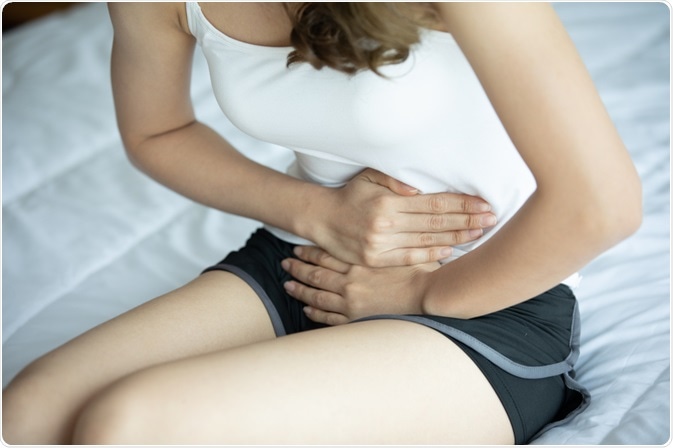Interstitial cystitis, also known as painful bladder syndrome (PDS), is a health condition characterized by chronic pain in the bladder and surrounding tissues. As a result of the pain and other symptoms, the quality of life of affected individuals can be inhibited significantly.
It tends to affect women more commonly than males, and the incidence is highest among people aged from 30 to 50 years.

Image Credit: Yuttana Jaowattana / Shutterstock
Primary Symptoms
The symptoms of interstitial cystitis are similar to that of a urinary tract infection, but it is not caused by a bacterial infection and antibiotic treatment, therefore, is not useful. The symptoms may include:
- Intense pain in the suprapubic or pelvic region
- Strong and sudden urge to urinate
- Increased frequency of urination (7-8 times a day)
- Night waking to urinate
- Pelvic pressure or discomfort
- Pain during or after sexual intercourse
- Urinary incontinence
- The pressure of the bladder, particular when full
These symptoms of interstitial cystitis may vary significantly in intensity over time and may be chronic or intermittent. Most patients find that the symptoms come and go in episodes that may last for a few days or months, followed by a period of improvement and another episode at a later date.
Triggers
There are several factors that may affect the severity of the symptoms and may be thought of as symptom triggers. These include:
- A full bladder
- During menstruation
- Certain foods and drinks
- A urinary tract infection (UTI)
- Stress (physical or mental)
Likewise, when it is possible to avoid or reduce these triggers, the symptoms of the condition may improve. For example, when a patient relieves himself or herself, the pain associated with having a full bladder is likely to improve.
It can be helpful for patients with interstitial cystitis to keep a food and drink diary to establish a link between certain foods that lead to a worsening of symptoms. If trigger foods can be identified, individuals can reduce their consumption of the foods and symptoms are likely to improve. Common trigger foods include tomatoes, spices, alcohol, chocolate, caffeine and citrus fruits.
Quality of Life
In addition to the main symptoms associated with the condition, patients may be affected by secondary symptoms that occur as a result and affect the quality of life.
For example, the pain associated with the condition may limit the individual’s ability to participate in work and lifestyle activities as usual. The increased frequency of urination can also disrupt their ability to partake in some activities or events.
Particularly for those individuals that have increased frequency of urination at nighttime, the sleeping habits can be disrupted and cause secondary symptoms as a result. These may include daytime sleepiness or fatigue and an effect on the emotional health of the patient.
Patients often have difficulty relating to other people and may feel isolated from others. Likely closely linked to this, depression is more common among patients with interstitial cystitis than other individuals.
The wide variance in symptoms, both primary and secondary, requires a broad management plan to address the concerns of the patient and improve the overall quality of life.
References